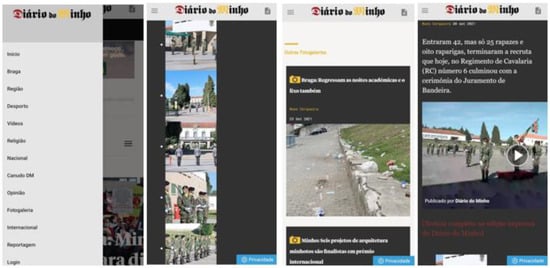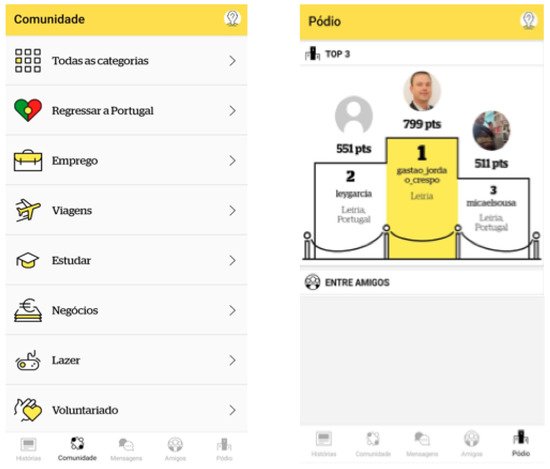New projects have recently emerged to develop geolocation technology for the publication of local news in Portugal. These types of new initiatives open the possibility to explore new media perspectives, identifying emerging directions and opportunities to develop more competitive ways to publish local news. In this work, we study these ideas and to what extent they can be used to cope with the challenges that the local Portuguese press is currently facing. We provide local news editors with information to further develop their e-participation and news publishing activities. To this end, we present 10 indicators that measure geolocation technology that has been successful in providing attractive services to local consumers. Lastly, we analyze five Portuguese apps by means of the proposed guideline. Our work shows that the use of geolocation technology has a great potential for local journalism in Portugal but nevertheless we still find flaws in their implementation.
- geolocation technology
- news publishing
- local journalism
- Portugal
- social dimension of news publication
- public access and engagement
1. Introduction
2. Results and Discussion
| Repórter no Mundo | Diário do Minho |
Açoriano Oriental |
Dnoticias | Diário de Coimbra |
|
|---|---|---|---|---|---|
| 1. Offers options to receive local information, such as here, nearby, or anywhere. | - | - | - | - | - |
| - | - | - | - | - | |
| 2. Proximity news alerts | - | - | - | - | - |
| 3. Visualization tools, such as online mapping | - | - | - | - | - |
| - | - | - | - | - | |
| 4. Tasks of local news | - | - | - | - | - |
| 5. Guest posts of localnews | ✓ | - | - | - | - |
| 6. Gallery for send videos or photos |
- | - | - | - | - |
| 7. Spaces for interaction between users from the same location | ✓ | - | - | - | - |
| 8. Location-based advertising |
- | ✓ | - | ✓ | - |
| 9. Social Media | ✓ | ✓ | ✓ | ✓ | ✓ |
| 10. Support for users | - | - | - | ✓ | - |


3. Conclusions
We have reviewed the current situation of the local press in Portugal, and we have analyzed the theoretical framework to present a novel assessment tool based on the definition of 10 indicators. This provides us with an effective guideline that allows us to assess the use of mobile apps by local journalism, regarding digital resources that delve into location information. In this way, we reached the second objective established for this work, presenting a methodology that allows local journalists to improve geolocation resources following the criteria used to validate each indicator.
This entry is adapted from the peer-reviewed paper 10.3390/publications9040053
References
- Camponez, C. Proposta de novos pactos comunicacionais para a era hiperlocal. In Media e Jornalismo de Proximidade na Era Digital, 21st ed.; Jerónimo, P., Ed.; LabCom: Covilhã, Portugal, 2017; Volume 1, pp. 11–26.
- Ramsay, G.; Moore, M. Monopolising Local News: Is There an Emerging Democratic Deficit in the UK due to the Decline of Local Newspapers? 1st ed.; Centre for the Study of Media, Communication and Power: London, UK, 2016; pp. 123–138.
- Firmstone, J.; Coleman, S. Rethinking local communicative spaces: Implications of digital media and citizen journalism for the role of local journalism in engaging citizens. In Local Journalism: The Decline of Newspapers and the Rise of Digital Media, 1st ed.; Nielsen, R.K., Ed.; Reuters Institute: London, UK, 2015; pp. 117–140.
- Jerónimo, P. O Jornalismo de Proximidade e a Profissão Fora dos Grandes Centros; Oliveira, V., Pedroso, M.F., Eds.; Comissão Organizadora do 4.º Congresso de Jornalistas: Lisbon, Portugal, 2018; pp. 279–281.
- Barnett, S.; Townend, J. Plurality, policy and the local. J. Pract. 2015, 3, 332–349.
- Portuguese Journalist Union. Available online: https://jornalistas.eu/sj-considera-urgente-apoiar-o-jornalismo-regional/ (accessed on 24 July 2021).
- Cardoso, G.; Baldi, V.; Quintanilha, T.; Paisana, M.; Pais, P. Jornais Regionais: A Análise de Perfis de Utilização. Actividade, Desafios e Políticas Públicas para o Sector, 1st ed.; OberCom: Lisbon, Portugal, 2018; pp. 126–140.
- Jenkins, J.; Jerónimo, P. Changing the beat? Local online newsmaking in Finland, France, Germany, Portugal, and the UK. J. Pract. 2021, 1–18.
- Jerónimo, P. Jornalistas da imprensa regional em transição para o mobile. In Jornalismo Móvel: Linguagem, Géneros e Modelos de Negócio, 1st ed.; Canavilhas, J., Rodrigues, C., Eds.; LabCom: Covilhã, Portugal, 2017; Volume 1, pp. 83–106.
- Google News Initiative. Available online: https://newsinitiative.withgoogle.com/dnifund/report/ (accessed on 15 July 2021).
- Correia, J.C.; Canavilhas, J.; Carvalheiro, J.R.; Ferreira, G.B.; Morais, R.; Sousa, J.C. Agenda dos Cidadãos: Jornalismo e Participação Cívica nos Media Portugueses Memória de um Projecto; LabCom: Covilhã, Portugal, 2014; pp. 156–180.
- Carla Martins, C.; Gonçalves, T. Imprensa Local e Regional em Portugal, 1st ed.; ERC: Lisbon, Portugal, 2010; pp. 132–145.
- Oppegaard, B.; Rabby, M.K. Proximity: Revealing new mobile meanings of a traditional news concept. Digit. J. 2016, 5, 621–638.
- Yaqin, S.; Songnian, L. Real-time collaborative GIS: A technological review. ISPRS J. Photogramm. Remote Sens. 2016, 3, 143–152.
- Jerónimo, P.; Correia, J.C.; Gradim, A. Are we close enough? Digital challenges to local journalists. J. Pract. 2020, 10, 735–750.
